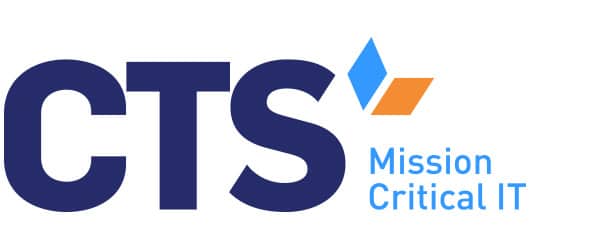The success of a hybrid workforce depends on the ability to stay connected, aligned, and productive across different locations.
This creates a pressing need for hybrid work software and technology that can support day-to-day tasks, as well as actively enhance the workplace experience for both in-office and remote employees. This is why organizations need the right collaboration tools.
This article explores how to evaluate and select hybrid work tools that align with your team’s needs—whether you’re managing communication across time zones, coordinating hybrid team projects, or rethinking how your teams book office days.
Why Collaboration Tools Matter in a Hybrid Work Model
In a hybrid work environment, tools need to enable people to do their best work, wherever they are. The tools your organization chooses can directly affect team morale, client satisfaction, and long-term operational efficiency.
Common Challenges Hybrid Teams Face
Organizations embracing a hybrid working model often run into familiar friction points:
- Fragmented communication between remote employees and in-office staff.
- Difficulties maintaining visibility into project status and team workloads.
- A lack of standard processes for coordinating office days and room bookings.
- Disengagement or misalignment caused by inconsistent digital touchpoints.
These technical challenges affect people at emotional and mental levels as well as professional and organizational; they have direct impact on how team members feel about their work, how supported they are, and how well they collaborate.
What Effective Collaboration Tools Can Solve
The right collaboration and communication tools create structure and connection in a flexible working environment. Here’s how:
- Unified communication: Centralize messaging, video conferencing, and updates in one place.
- Project clarity: Track progress, assign responsibilities, and share resources without confusion.
- Improved accessibility: Ensure team members working remotely have the same access and input as in-office peers.
- Stronger culture: Reinforce cohesion and inclusivity, especially across distributed teams.
For IT managers and HR leaders tasked with improving the workplace experience, aligning your tech stack with these outcomes is key. Every tool adopted should serve a clear purpose: supporting people, not just processes.
Learn more: IT Strategy Development: A Step-by-Step Guide
How to Choose the Right Hybrid Work Software
Not every tool fits every team, and in a hybrid workplace, forcing a tool that doesn’t align with your workflows can create more friction than it resolves. Before investing in any hybrid work software, IT leaders and business decision-makers should step back and assess the dynamics of their workforce.
Key Evaluation Criteria
When considering new hybrid workplace solutions, focus on these areas to guide a more strategic selection process:
- Compatibility with existing systems: Tools that integrate smoothly with your current software stack reduce onboarding time and minimize disruptions.
- User experience across roles: Ensure usability for both technical and non-technical staff. Tools should be intuitive enough for daily use without constant troubleshooting.
- Security and compliance: Collaboration tools must meet your organization’s data protection requirements, particularly in sectors with regulatory obligations.
- Scalability: As your hybrid team grows, the software should be able to grow with it—supporting more users, more integrations, and more complex workflows without degradation in performance.
- Support and reliability: Look for tools backed by responsive support teams and consistent uptime guarantees. Downtime directly impacts productivity in hybrid work environments.
Know Your Employees’ Collaboration Habits
Tools succeed when they align with how your people actually work. Before choosing a platform, gather input from department heads and end users about how they currently collaborate:
- Are conversations happening over email, chat, or ad hoc video calls?
- Are projects tracked in spreadsheets, whiteboards, or disconnected tools?
- How often are office days coordinated, and how is space managed?
Learn more: Why Aligning Business and IT Strategies is So Important
Matching Technology Features to Business Needs
Choosing the right hybrid workplace technology means selecting tools with features that meet specific demands of your workforce. Different business needs call for different functionality, and understanding those distinctions helps ensure your investment drives real impact.
1. Communication Across Time Zones and Roles
Need: Keep hybrid and remote employees in sync regardless of location or schedule.
Look for:
- Persistent chat with channel-based organization.
- Asynchronous video messaging or meeting recordings.
- Native integration with calendars and time zone indicators.
These features help remote teams maintain visibility without constant real-time communication, improving the overall working environment.
2. Structured Project and Task Management
Need: Align teams around shared goals and responsibilities, especially when some members work from home and others are onsite.
Look for:
- Visual task boards (e.g., Kanban or Gantt views).
- Custom workflows for different departments.
- Clear assignment of owners, deadlines, and priorities.
These features are vital for keeping complex deliverables on track in a hybrid team structure.
3. High-Quality Video Conferencing
Need: Facilitate clear, consistent communication between remote and in-office staff.
Look for:
- HD video and reliable audio quality under varying bandwidths.
- Background noise suppression and transcription capabilities.
- Integration with meeting room systems and room booking tools.
Video conferencing remains central to the hybrid workplace experience, especially in maintaining culture and face-to-face rapport.
4. Managing Office Presence and Space Usage
Need: Coordinate office days and ensure space is used efficiently when staff are onsite.
Look for:
- Desk and meeting room booking functionality.
- Automated scheduling based on team rotations or priorities.
- Analytics on workspace usage to inform future planning.
This is essential for businesses using a hot-desking model or managing a leaner physical footprint.
5. Centralized Information Access
Need: Ensure all team members—regardless of where they’re located—can access the documents and knowledge they need.
Look for:
- Cloud-based file storage with permission controls.
- Advanced search functions and version history.
- Mobile access and offline availability.
Strong document collaboration capabilities reduce redundancy and confusion, especially in cross-departmental work.
Learn more: Building Out School Infrastructure: How MSPs Can Help
Next Steps: Get the Right Tools for Your Workforce
A successful hybrid workplace needs to be supported by the right technology that bridges the gap between in-office and remote employees. Collaboration tools should empower people to connect and contribute, no matter where they’re working.
At CTS, we help businesses assess, implement, and optimize hybrid workplace solutions tailored to their people and processes. If you’re unsure which collaboration tools best fit your team’s needs, or you’re looking to improve adoption and performance across your technology stack, our team is here to help.




